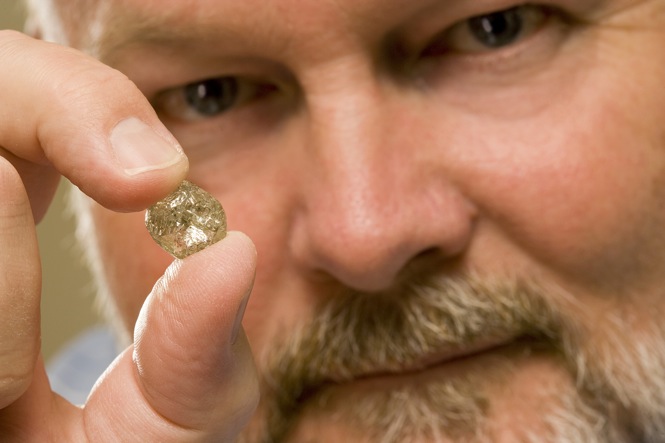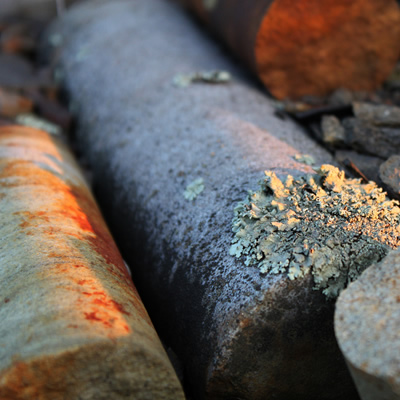Drilling for diamonds
George Read has been around the world searching for the iconic crystals and is currently working on a deposit in Saskatchewan

George Read has explored for diamonds in many different parts of the world. — Courtesy Shore Gold Inc.
The discovery of diamond-bearing kimberlites at Fort a la Corne was the first of its kind in Saskatchewan; more than 20 years after the initial discovery in 1989, companies are still exploring the potential—companies like Shore Gold Inc.
The company acquired key properties in 1995 and has been gathering further information and examining the viability of extraction under the direction of George Read, the senior vice-president of exploration and development.
Read has been in the diamond exploration business for over 30 years, travelling from his home country of South Africa to projects in Brazil and Canada, eventually settling in Maple Ridge, B.C. However, his current project with the Fort a La Corne kimberlites is situated roughly 60 kilometres east of Prince Albert in central Saskatchewan.
Read said the Star-Orion South project is the most exciting one he has been involved with during his extensive career.
“This is a once-in-a-lifetime opportunity for a diamond explorer to work on a diamond-bearing kimberlite that has an extremely good probability of becoming a major diamond mine,” he said.
Out of Africa
Growing up in Cape Town, South Africa, Read had always dreamed of following a career path that would allow him to be outdoors. His family did some extensive travelling in South Africa and neighbouring Namibia and he was constantly exposed to nature around him.
“I was fascinated with natural wonders, so I think that was a lead into geology,” Read said. “I always collected and picked up rocks and minerals, so that was probably the start of it all.”
When he finished high school, Read enrolled in the geology program at the University of Cape Town after talking with some of the university professors about working in the field. He finished his degree in geology and geochemistry in 1983 and began looking for work. In filling out a job application, Read approached a professor to cite him as a reference, but was offered a different job instead.
“[The professor] said, ‘Ah, forget about it. I just got a call from somebody at De Beers and they’re looking for someone just like you,’ ” Read recalled. “The long and the short of it is I got the job.”
The job itself was working at Anglo American Research Laboratories (Pty) Ltd. in Johannesburg as the senior research geologist in 1984, where Read was part of a team that analyzed and interpreted rock and mineral samples for De Beers’ worldwide exploration efforts.
He ended up in Canada for the first time in 1992 working for Monopros Limited, the Canadian branch of De Beers, studying diamond projects in the Northwest Territories, northern Quebec and Saskatchewan, where he was first introduced to the Fort a la Corne kimberlites.
Around the world
Read hopped around after his two-year stint with Monopros—heading back to Johannesburg for a bit—but returned to Canada to start his own consulting firm in Vancouver in 1997.
A joint venture between Canabrava Diamond Corporation and SouthernEra Resources drew him down to Patos de Minas in Brazil to work as a project manager, operating a diamond exploration program. Read said high-grade alluvial diamonds have come out of Brazil and the region used to be the world's main diamond producer before South Africa came into prominence between 1870 and 1880.
“I really liked working in Brazil; it was mostly in countryside that was being farmed for coffee or vegetables,” Read said. “Some of it was quite remote but you could always get there with a pickup truck and a pair of boots.”
In 2001, after his experience in Brazil, Read moved back to Vancouver, where he headed up exploration projects in Brazil and Canada for Canabrava. A year later, he took over as president and CEO.
Sailing to another Shore
Black Swan, a Canadian diamond company, acquired Canabrava properties in 2003 and Read left to join Shore Gold, working primarily on the Star kimberlite project. As vice-president of exploration, Read was responsible for further exploration and proving the value and grade of the diamonds, as well as overseeing Shore’s nationwide diamond exploration projects.
“The reason behind joining Shore was motivated by the fact that kimberlites are extremely difficult to find," he said, "and I thought, ‘Well, Shore Gold has a great step ahead in that they’ve found a remarkably big kimberlite and it has diamonds in it.’ ”




